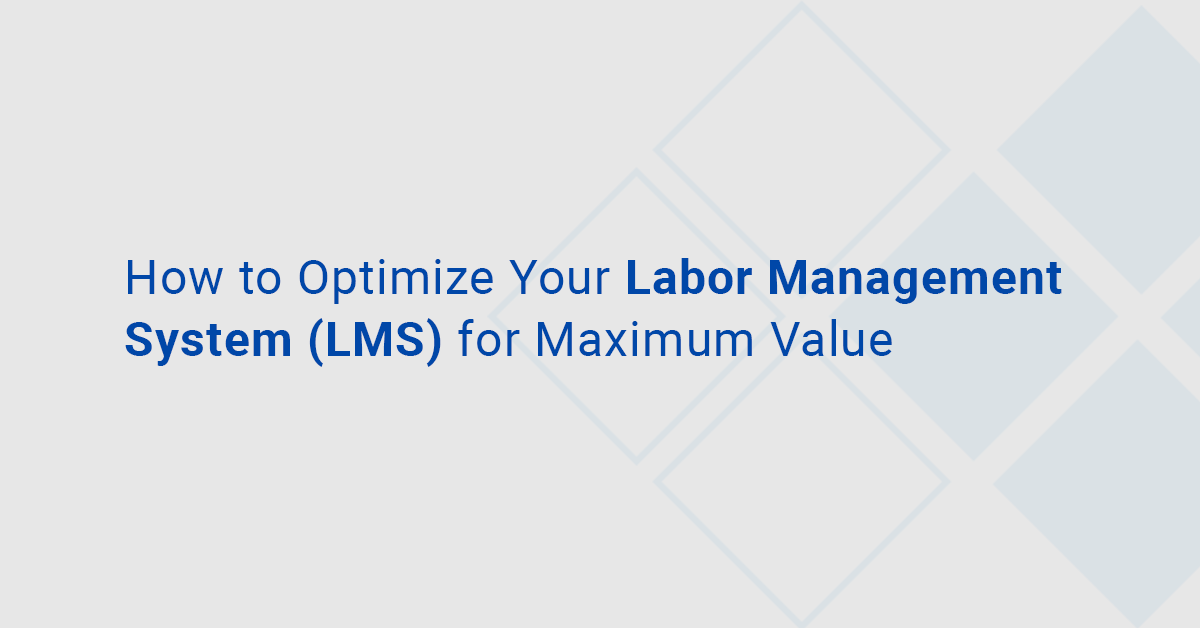A Labor Management System System is a vital tool for warehouse operators looking to increase workforce productivity and efficiency. However, the full potential of many LMS implementations remains untapped, leaving organizations without the full benefits of a comprehensive labor management program. Here’s how to optimize your LMS into a dynamic LMP that not only drives productivity and lowers labor costs but also fosters an engaged and motivated workforce.
The Shifting Landscape of Labor Management System
The rise of Gen Z employees has led to a significant shift in what the workforce values most, prompting new labor management approaches. Unlike with past generations, where employment may have served primarily as a means to earn income, today’s employees place higher value on engagement, growth opportunities and a sense of purpose in their work. As a result, organizations must create a culture that embraces innovation, technology and sustainability practices to attract and retain top talent, which is where a fully optimized LMS can provide huge benefits.
Addressing Challenges
One of the common barriers to optimizing an LMS to achieve a successful LMP lies in a lack of executive sponsorship and supervisor execution. Executive involvement aids in driving an overall cultural transformation supported by the LMS. Without this transformation, which ideally includes a facility-wide change management initiative, organizations risk missing out on opportunities to improve retention rates, enhance employee engagement and ultimately drive greater overall satisfaction among employees.
Cultivating a Culture of Value
The cultural aspect of an LMP is pivotal to its success. Neglecting this dimension can undermine an organization’s ability to create an environment where employees feel valued and motivated. A well-implemented LMP not only drives tangible cost savings but also establishes a workplace that employees are proud to be a part of. By fostering a culture of recognition, collaboration and innovation, companies can create a positive feedback loop where engaged employees contribute to higher productivity and greater efficiency.
Steps To Optimize Your LMS
Once warehouse operators secure full leadership buy-in, they can take the following steps to maximize the value of their LMS and use it to support an LMP that delivers labor cost savings, increased efficiency and higher retention.
- Enhance Coaching and Rewards: Revamping coaching processes and rewards programs is essential to super-charging an LMP. This includes ensuring supervisors actively engage with associates—spending at least half their time on the floor—and enhancing recognition initiatives to publicly celebrate employee achievements.
- Embrace Incentive-Based Pay: Supported by multi-determinant engineered labor standards, an LMS provides the data warehouse operators need to create dynamic incentive-based pay programs and gamification elements that heighten productivity by rewarding employees for their valuable contributions.
- Create a Culture of Continuous Improvement: Establish a robust system for monitoring key performance indicators (KPIs) that gauge the success of your LMP. This includes using the LMS to track turnover rates and the degree of engagement in recognition and rewards initiatives.
- Foster Ongoing Engagement: The role of supervisors is pivotal in maintaining ongoing engagement. Actively participating on the floor, offering real-time feedback and creating a positive atmosphere are essential components.
Make Your LMS Vendor a True Partner in Your Operation’s Success
Leveraging the expertise of your LMS vendor is an invaluable step in getting maximum value from the program. To take advantage of the full spectrum of capabilities the software offers, join the LMS client advisory committee, engage with user communities, regularly share feedback and feature requests with your vendor and stay informed about LMS updates—and associated training opportunities—that can further enhance your LMP.
By implementing these steps and leveraging the vendor’s expertise, your organization can harness the full capabilities of an LMS. That will in turn set you up for a successful LMP that lays the foundation for sustainable growth and cost savings as your workforce profile continues to evolve.
To learn more about what a fully optimized LMS can do for your operation, book a ProTrack demo today.
Author: John Seidl, TZA Director of Partner Programs
Related TZA Resources:


